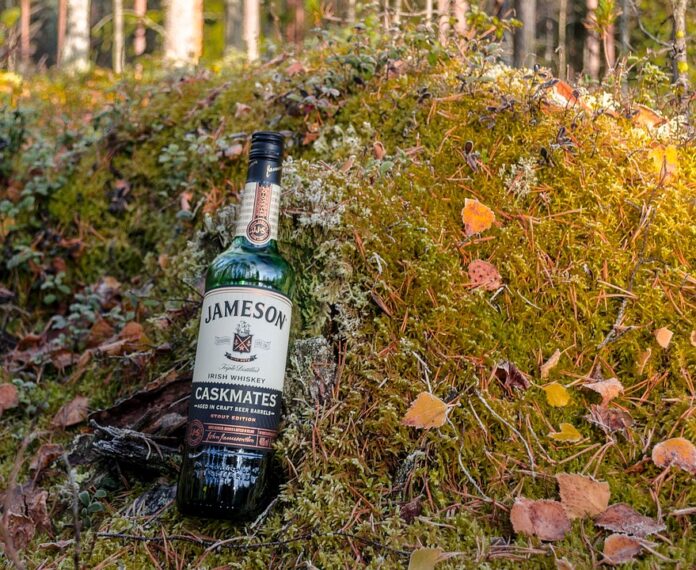Introduction
Blended whiskey has been a staple in the spirits industry for centuries, known for its smooth and consistent flavor profile. However, with the rise of craft distilleries and the increasing demand for unique and innovative products, traditional blended whiskey brands have had to adapt to stay relevant in the market. In this report, we will explore how innovation is playing a key role in elevating the reputation of blended whiskey, attracting a new generation of consumers and expanding the market for this classic spirit.
The Evolution of Blended Whiskey
Blended whiskey is a combination of different types of whiskies, typically a blend of malt whiskey and grain whiskey. This blending process allows for a more complex and balanced flavor profile compared to single malt whiskies. Historically, blended whiskey has been associated with larger, well-established brands such as Johnnie Walker, Chivas Regal, and Ballantine’s. These brands have dominated the market for decades, offering consistent quality and familiar taste profiles that have garnered a loyal following of consumers.
The Rise of Craft Whiskey
In recent years, there has been a surge in craft distilleries producing high-quality, small-batch whiskeys that have captured the attention of enthusiasts and connoisseurs. These craft distilleries often focus on innovative production techniques, unique flavor profiles, and premium ingredients to differentiate themselves in a crowded market. As a result, traditional blended whiskey brands have faced increased competition from these up-and-coming craft producers.
Embracing Innovation
To stay competitive and appeal to a new generation of consumers, many blended whiskey brands have embraced innovation in their product development and marketing strategies. This has involved experimenting with different aging techniques, introducing limited edition releases, collaborating with other brands or artists, and leveraging technology to enhance the consumer experience. By embracing innovation, these brands have been able to create excitement and buzz around their products, attracting a younger demographic and expanding their market reach.
Innovative Practices in Blended Whiskey
Aging Techniques
One of the ways blended whiskey brands have innovated is by exploring new aging techniques to enhance the flavor profile of their products. By experimenting with different types of barrels, finishes, and aging durations, distillers can create unique and complex flavor profiles that set their products apart from traditional blends. For example, some brands have introduced double-barrel aging or used specialty casks like sherry or rum barrels to impart distinctive flavors to their whiskeys.
Limited Edition Releases
Limited edition releases have become a popular strategy for blended whiskey brands to generate excitement and demand among consumers. These special releases often feature unique packaging, rare ingredients, or limited production runs, making them highly sought after by collectors and enthusiasts. By creating scarcity and exclusivity around these products, brands can command premium prices and build brand loyalty among their most dedicated fans.
Collaborations and Partnerships
Collaborating with other brands, artists, or celebrities has become a common practice among blended whiskey producers looking to reach new audiences and create innovative marketing campaigns. By partnering with well-known personalities or organizations, brands can leverage their existing fan bases and create buzz around their products. These collaborations often result in limited edition releases or special bottlings that appeal to collectors and fans of both brands involved.
Technology Integration
Advancements in technology have also played a role in the innovation of blended whiskey. Brands have utilized virtual reality experiences, augmented reality labels, and online platforms to engage consumers in new and interactive ways. By incorporating technology into their marketing strategies, brands can create immersive experiences that educate consumers about their products and differentiate themselves in a competitive market.
Financial Impact and Industry Insights
The innovative practices adopted by blended whiskey brands have not only elevated their reputation but also had a significant financial impact on the industry. According to a report by Statista, the global whiskey market was valued at $59.8 billion in 2020 and is projected to reach $84.8 billion by 2025, growing at a CAGR of 7.2%. This growth can be attributed to the increasing demand for premium and craft whiskeys, driven by consumer preferences for unique and innovative products.
Key Players in the Blended Whiskey Market
Leading blended whiskey brands such as Johnnie Walker, Chivas Regal, and Ballantine’s continue to dominate the market with their heritage and legacy. These brands have successfully adapted to changing consumer preferences by introducing new products, collaborating with artists and influencers, and leveraging technology to enhance the consumer experience. Additionally, craft distilleries such as High West, Compass Box, and Nikka have gained a strong foothold in the market with their innovative approaches to whiskey production and marketing.
Consumer Trends and Preferences
Consumer trends in the whiskey market indicate a growing preference for premium and craft whiskeys, driven by a desire for unique flavors, high-quality ingredients, and innovative production techniques. Millennials and Gen Z consumers, in particular, are seeking out brands that offer authenticity, transparency, and sustainability in their products. As a result, blended whiskey brands that embrace innovation and cater to these preferences are well-positioned to attract a new generation of whiskey drinkers.
Conclusion
Innovation is key to elevating the reputation of blended whiskey and staying competitive in a rapidly evolving market. By embracing new aging techniques, limited edition releases, collaborations, and technology integration, blended whiskey brands can attract a wider audience, generate excitement among consumers, and drive growth in the industry. As consumer preferences continue to shift towards premium and craft whiskeys, brands that invest in innovation and creativity will be best positioned to succeed in the ever-changing whiskey market.


